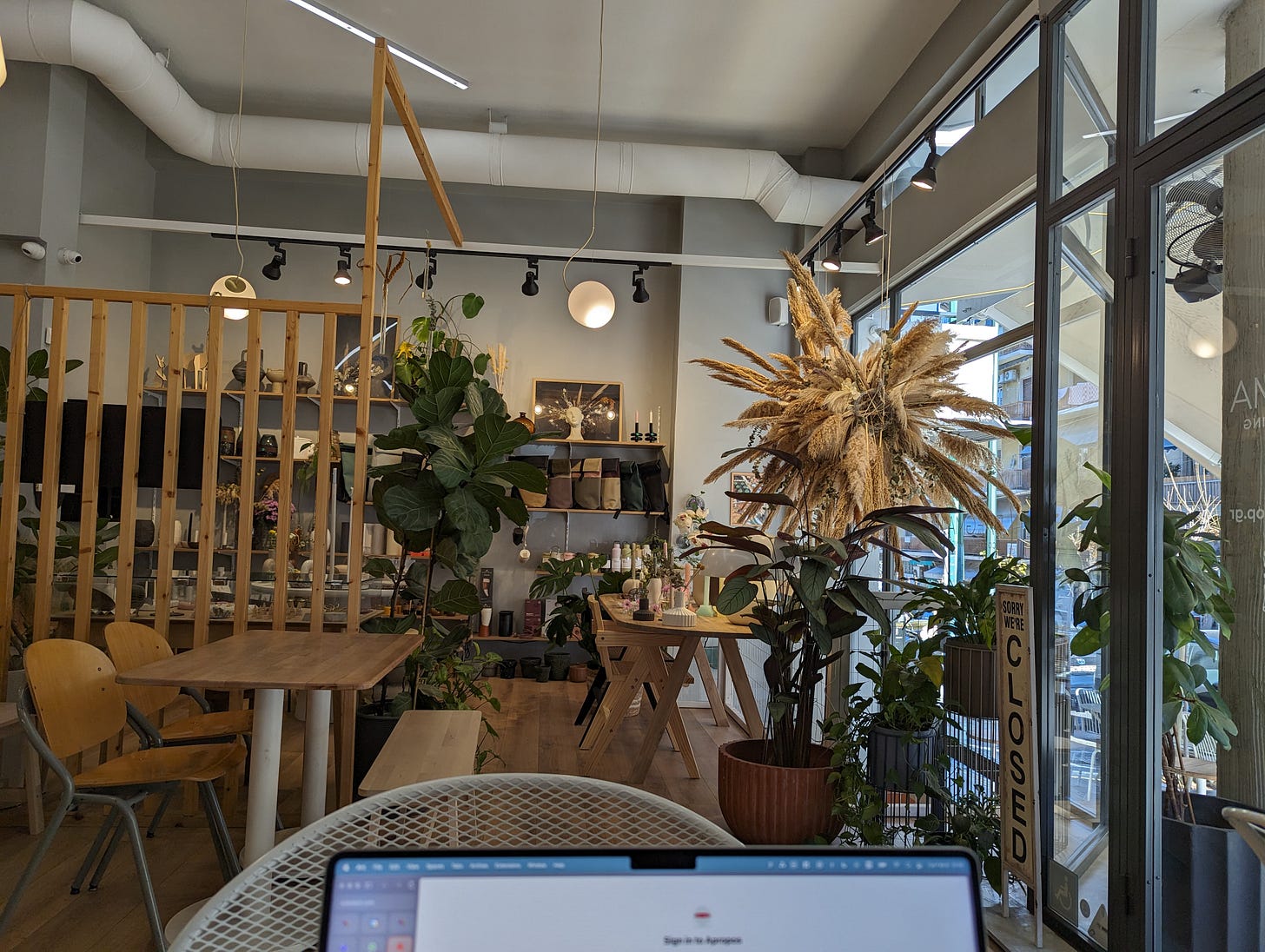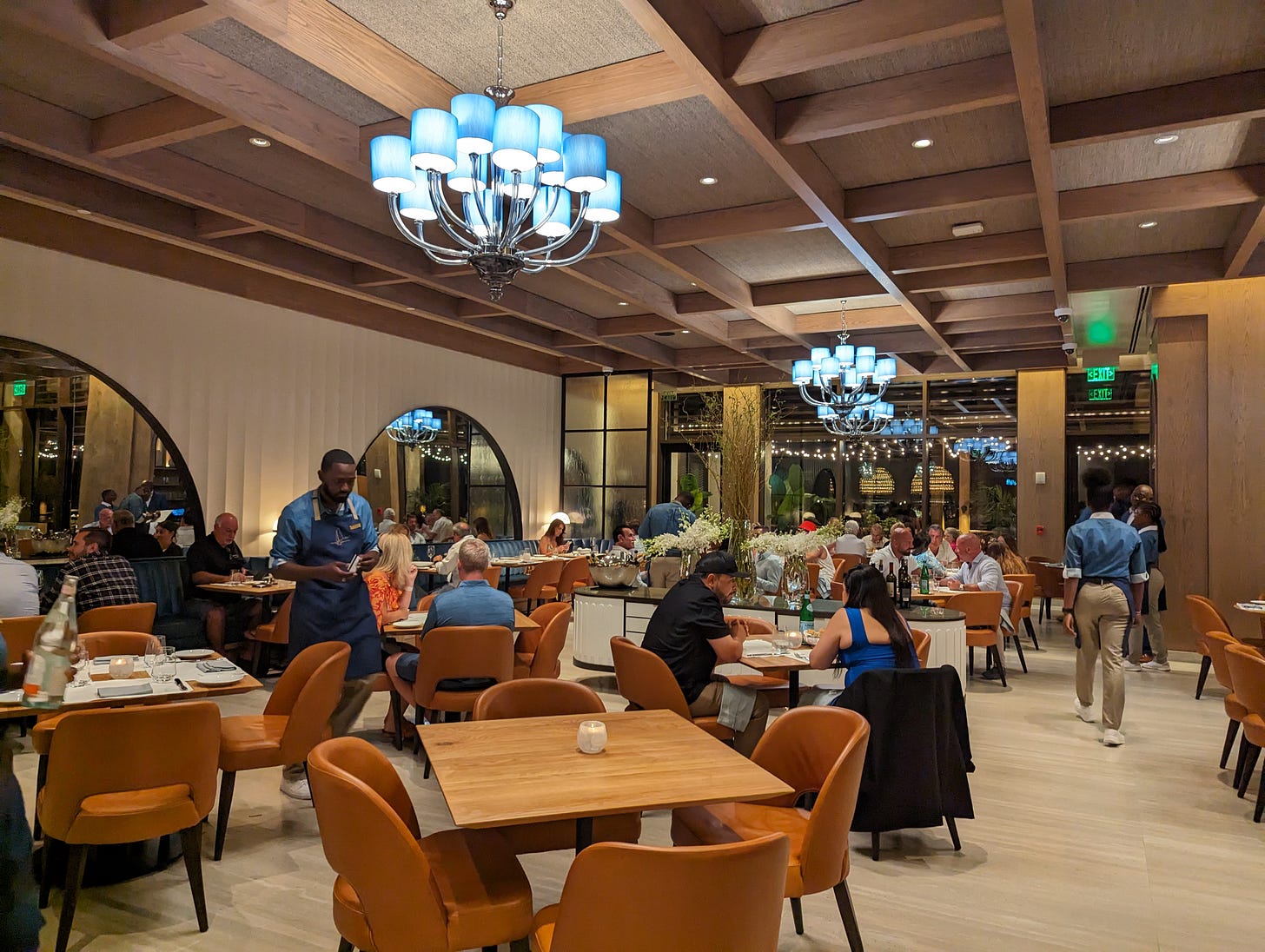It’s hard to make friends as an adult.
We have real life to deal with—a job, bills to pay, cats to feed. By the time we're done with work and the endless cycle of emails and chores, who has the energy to meet new people?
But there's this deep craving for connection, at least I feel it.
Not because I don't love my current friends or my partner (hey guys!), but because I’m curious. I want to find that person who gets excited about Nietzsche, or wants to start a zine with me, or who’d like to learn woodworking.
I want my daily life to be deep and vibrant, that’s why I want friendships that spark new ideas and project.
Despite being more connected than ever through the internet and social media, we are experiencing increased feelings of loneliness and isolation.
And not just that, but there seems to be no cozy place where I can go to meet new friends and hang out for hours?
I love coffee shops and restaurants, but where are the maker spaces, and the libraries with a bar, the schools that teach how to make stuff with our hands, the cooking spaces with cozy dining rooms open late, the parks with shared gardens and bookable picnic areas?
It’s interesting that the top search query was “where to meet people”. People are seeking spaces where they can build new relationships.
What are the third places?
Coined by sociologist Ray Oldenburg, third places are spots separate from our home (first place) and our work (second place) where people gather, interact, and build relationships. They are the informal public spaces that foster community and a sense of belonging.
A local pub of a small town or tight-knit neighborhood is quintessential third place. It’s the home away from home for many locals.
It’s a simple, unpretentious place where getting a drink or a bite serves as the excuse for socializing with neighbors and friends.
It’s a neutral ground and—in Oldenburg’s words, a “leveler”: an inclusive environment that promotes social equality because status does not matter there. Even though this is a private place (i.e. a business), it serves almost like a public space since anyone can go there, hang out and talk to other people. That’s why he holds third places to be integral for a healthy community.
Now, Oldenburg wrote about this 35 years ago, and a lot has changed.
People now move more often, either for work or personal reasons, especially to urban areas. This mobility disrupts the formation of tight-knit communities that naturally cultivate third places. The sense of belonging that comes from years of living in a small town or neighborhood is hard to replicate in cities where more people are transient.
Today—in cities, especially—venues are centered around consumption rather than connection. Restaurants and cafes often prioritize turnover; once you finish your meal or drink, the subtle expectation (or not-so-subtle if you are in the US) is to make way for new customers. It makes sense, restaurants and coffee shops are businesses after all. They need to make money.
Most importantly, we have phones and screens disrupting the ambiance of a social space.
Connections require time and openness. Now, we rarely have idle moments to just hang out or strike up a conversation because we have our phones with us at all times. The (milli)second we have to wait for an order or for the elevator or while our friend is back from the toilet, we take our phone out and become distracted.
In reality, it’s not so much that third places have diminished, but our behavior there has changed and made them less potent for community building.
Paradoxically, there’s a ton of third places that in theory foster connection and community but we are feeling more alone. What’s going on?
What makes a third place good?
The trigger for this essay was actually a stay in Athens a few months ago where I experienced how different a coffee shop can be.
We stayed in Pangrati, where there’s a mix of hip young newcomers, and families and elders and who’ve lived there all their lives.
Most days, I went to a nearby coffee shop to work. On my walk, I passed a tiny coffee shop with some tables on the sidewalk and a small window that opened up to where the owner would prepare drinks. It looked like it had been there for decades. Locals, especially the elderly, would spend hours there, chatting with neighbors/friends, smoking and bantering with the owner, and observing passersby. There was a palpable sense of community.
Five blocks (and a very steep hill) later, there was my specialty coffee shop. A large, modern space with neutral colors, a Marzocco machine (the espresso machine du jour), and a concept store on the opposite side. People were super nice (as most Athenians are) but they were younger, hipper, and drank lattes with oat milk. The majority of us were working on our laptops and there was little interaction between tables.
These two coffee shops were in the same neighborhood yet served completely different purposes. One was truly about the regulars and the other about getting some work done. Imagine I go to the first one with my laptop and noise cancelling headphones. The elderly men would judge me harshly. And the inverse would be true.
Oldenburg describes the inclusive aspect of a third place fundamental. For him third places play a societal role as a neutral ground that fosters civic values.
Even today, there are constant cries that there are no more public spaces (i.e. parks, community centers) in cities and that we should build more in order to create more community and civic engagement.
The thing is that it’s not only what we build, but how we build it. A park can be an awesome neighborhood space with a shared garden and a kiosk for community events, or it can be an empty, endless lawn with two trees visited by drug users.
The most important element for me is how engaged people are with each other, how vital the space is for its community, how easy it is to strike a conversation and continue it for minutes or hours.
We need to differentiate places that are truly vibrant community spaces and those serving other purposes.
So we have two main axes for our analysis: inclusivity (how public and open a space is) and social engagement (how engaged its members are).
Naturally, I made a 2x2.
Shared Public Spaces
Places you can easily access and hang out at but there is not a lot of interaction among other users.
I’m writing this from a library in Madrid—the National Library of Spain, actually. It’s free to access (with a card) and I hang out here many hours a day writing and reading. I don’t know any of the people who come too, we don’t interact or talk (talking is not allowed).
It provides a space for specific, individual pursuits in a shared environment.
Reserved Social Spaces
Places that are harder to access because of price or reservations, and even though social in nature, interaction is limited to individual groups.
This is the quadrant with the most openings in cities, usually: restaurants, higher-end coffee shops, bars, fitness clubs…
These places have a lively atmosphere and serve a function for meeting friends, but there is almost no interaction between parties. You don’t go there to meet new people.
Vibrant Community Spaces
Open and welcoming spaces for people from various backgrounds to actively interact. They are key for community building in a local neighborhood or town. These are Oldenburg’s archetypes.
Local markets are a great example of these. If you go regularly, you get to meet the owners of the stands and get to create a relationship with them. Our fishmonger, charcutero and poulterer (fancy word for poultry vendor) all know my husband by name and know what he likes and how he likes it. There’s something so homey about seeing the same faces and feeling connected, day after day.

Private Clubs and Networks
Places closed off to the larger public but open and vibrant for the people who share same interests, hobbies or lifestyle. They usually require a membership or introduction because there is a strong sense of community.
This quadrant will be the most interesting in the coming years. It’s already seen enormous growth, at least in Madrid. There’s been an explosion of social clubs, each with its own character and serving different interests. Club Matador for cultural events and music. Club Prim 5 for vibes and networking. Club Monteverdi for arts and classical music.
What people want more of
For me, the top two quadrants are the ones people crave the most, and the ones that will be transformed in the coming years.
It’s amazing to have new parks and experimental restaurants, but we also need spaces where we can build new relationships, where we can have actual conversations, and discuss important ideas and feelings. I call them places for sensemaking.
These have been greatly underdeveloped, until now.
For me, the value of these places lies in intentionally creating and nurturing spaces that prioritize human interaction over consumption, promoting a cultural shift so we start valuing more presence over distraction, enjoyment over productivity, openness over judgment.
After all, from these continued interactions, not only friendships can emerge, but so do ideas, collaborations, and a deeper sense of belonging.
postscript 📮
As a first experiment, let’s put away our phones, step out of our comfort zones, and say hi to the humans in front of us. They probably want to say hi, too.
Some questions I have for you, guys:
Is there another axis you’d use to group third places?
Are there places where you find or maintain community life that don’t fit into the third places idea?
Do you feel more or less lonely with social media?
Do you also feel that the rise of a globalized aesthetic is making restaurants and coffee shops more generic?
How’s life?







Hola Santiago, soy Pepe Denogean, espero me recuerdes.
Súper padre artículo, agradablemente escrito y con los cuestionamientos “al aire” que invitan a reflexionar y porqué no, a buscar participar en crear comunidad y disfrutar los Third Places.
Los pueblos y pequeñas ciudades pegadas al Mediterráneo, en Italia y Grecia, se caracterizan por alentar charlas y desarrollar comunidad (también en España para el veraneo de los Nórdicos en Ibiza y Mallorca), porque el Europeo “sabe disfrutar” más el tiempo de la comida-bebida con los amigos. No les gusta “vivir de prisa” y “vivir para consumir”…el momento compartido hace la diferencia.
Abrazo con afecto y felicidades por este artículo-opinión-reflexión